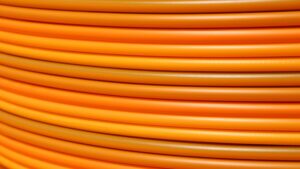06/09/2023
As discussed in our previous blogs[1],[2], companies working in the space sector, and in particular those who’s inventions are used in space, face additional challenges when it comes to protecting their innovation. This is because, as set out in Article II of the Outer Space Treaty, the fundamental basis for all legal framework in outer space, “Outer space, including the moon and other celestial bodies, is not subject to national appropriation by claim of sovereignty, by means of use or occupation, or by any other means.” While there are some exceptions due to specific treaties (such as the Intergovernmental Agreement for the International Space Station), in general Article II of the Outer Space Treaty means that patents, being territorial rights, cannot directly cover activity performed in outer space.
The concept of areas not being within the territory or jurisdiction of any country is not as out of this world as it might first seem, however. Despite covering around 50% of the Earth’s surface, the high seas, like outer space, are not subject to national appropriation and do not fall under any national sovereignty. While the modern international patent system outdates the era of spaceflight, it does find its roots in the Golden Age of Sail (the Paris Convention dates from 1883 – more on this later). Perhaps then, a comparison with how patents interact with maritime laws may provide a useful insight into how the patent system can be utilised effectively in the space sector.
The High Seas (International Waters)
Although there is not a definitive legal definition of the boundary of outer space, multiple zones of the sea are specified in the United Nations Convention of Law of the Sea 1982 (UNCLOS). Different legal provisions and levels of jurisdiction apply to each zone:
Internal waters – this zone covers sea areas that are landward of a baseline, measured at low tide, in which the costal state exercises sovereignty.
Territorial sea – this zone extends 12 nautical miles from the baseline. This zone is under the jurisdiction of the coastal state. Within territorial seas, a state is free to set laws, regulate use and use any resource. Foreign vessels have the right to right to navigate through territorial seas, known as ‘innocent passage’.
Contiguous zone – this zone extends a further 12 nautical miles from the outer boundary of territorial seas. Here, a state can enforce its laws in specific matters – customs, taxation, immigration and pollution – if the infringement started with a state’s territorial waters, or if the infringement is about to occur in the territorial waters.
Exclusive economic zone (EEZ) – this is a 200 nautical mile zone that extends from the baseline. A state has exclusive rights over all natural resources within this zone.
Continental shelf – this is also a 200 nautical mile zone from the baseline where the state has certain rights pertaining to the seabed and subsoil. On occasion, the coastal state may be entitled to an extended continental shelf.
High seas – the high seas, colloquially termed international waters, cover all parts of the sea that are not included in the any of the zones listed above. The high seas are open to all states. No part of the high seas can be subject to claims of sovereignty. The high seas are, therefore, most comparable to outer space.
Patents and the Oceans
Patent infringement can occur within territorial waters of a coastal state, with coastal states free to apply their patent laws to these areas. When it comes to the other zones, there is less clarity. Depending on the country, whether a patent can be infringed in the EEZ varies. Some countries have interpreted the language of the UNCLOS as allowing extension of patent rights to the EEZ, while others have not. The UK for example, extends the protection offered by a GB patent beyond its territorial waters to cover certain areas in the EEZ, defined in the Continental Shelf Act 1964 and the Petroleum Act 1998.
Moving further from shore, beyond the EEZ lie the high seas, where no nation can exert control. Here, the situation regarding patents again becomes clear – no patent can cover the high seas as they are extraterritorial.
Despite patents not covering activity on the high seas, most activity that takes place on the high seas begins or ends within the territorial waters of a state. For example, in international trade, ships depart from a port of one country and arrive at a port of another country. They will, therefore, at some point be within the jurisdiction of a nation and subject to its patent law and liable for infringing patents of that country. There is, however, a notable exception – precisely to avoid hampering international trade.
Temporary presence under the Paris Convention – how does it relate to space?
Requiring a ship, that travels the globe passing through ports of many countries, to have to consider whether it contained any patented products or components would add a great burden to the operator and could substantially hamper international trade. This was foreseen early on, and Article 5ter was added to the Paris Convention for the Protection of Industrial Property in 1925. This Article relates to the temporary presence of vessels within a country:
“In any country of the Union the following shall not be considered as infringements of the rights of a patentee:
(i) the use on board vessels of other countries of the Union of devices forming the subject of his patent in the body of the vessel, in the machinery, tackle, gear and other accessories, when such vessels temporarily or accidentally enter the waters of the said country, provided that such devices are used there exclusively for the needs of the vessel;
(ii) the use of devices forming the subject of the patent in the construction or operation of aircraft or land vehicles of other countries of the Union, or of accessories of such aircraft or land vehicles, when those aircraft or land vehicles temporarily or accidentally enter the said country.”
Article 5ter of the Paris Convention provides for certain limitations on the rights conferred by a patent in name of public interest. In essence aircraft, ships or land vehicles which have a patented invention on board do not have to worry about patent infringement in each and every jurisdiction they accidentally or temporarily enter – for example, during trade.
In the context of the space sector, one question that springs to mind is whether this exclusion applies to spacecraft? Currently, in the same way ships depart from ports within the territory of a state, all space objects are also launched from within a state here on Earth. Therefore, at this point, they would seem to be covered by any patents of that state, unless such acts were excluded from infringement under Article 5ter above or the national law implementing these provisions, such as Section 60(5)(e) of the UK Patents Act 1977.
Article 5ter does not explicitly disclose spacecraft, so a spacecraft that is launched or returned in a foreign country may not be automatically exempt from patent infringement. Most countries, like the Paris Convention itself, do not further define what constitutes a “vessel”, “aircraft”, or “vehicle”. While arguments could be made that a spacecraft could fall within each of these three categories, without specific clarification it is unclear whether or not a spacecraft would be exempted from patent infringement.
Temporary presence in national law
Most countries, like the Paris Convention, do not further define what a vessel, aircraft, or vehicle are. So it is unclear whether or not a space object fits into the criteria. The US, however, has explicitly included space objects within the definition of “vehicle”. 42 U.S. Code § 2457(k) states that, “any object intended for launch, launched, or assembly in outer space shall be considered a vehicle for the purpose of section 272 of title 35.” 35 USC 272 being the US law implementing Article 5ter of the Paris Convention. Therefore, it would seem that any object brought into the US with the intention to launch it into outer space (whether from the US or even elsewhere) would appear not to be covered by a US patent.
However, care needs to be taken when concluding that US patents can safely be ignored. It is necessary to consider the exact wording of 35 USC 272:
“The use of any invention in any vessel, aircraft or vehicle of any country which affords similar privileges to vessels, aircraft or vehicles of the United States, entering the United States temporarily or accidentally, shall not constitute infringement of any patent, if the invention is used exclusively for the needs of the vessel, aircraft or vehicle and is not offered for sale or sold in or used for the manufacture of anything to be sold in or exported from the United States.”
For a space object, as a vehicle, to avoid patent infringement, the invention in question must be used “exclusively for the needs of the… vehicle” Therefore, whether or not a space object is exempted from infringing a particular patent may depend on whether that patent covers an invention that is used in exclusively for the needs of the vessel. This may cover any inventions central to the operation of a satellite, but not inventions relating to a service provided by the satellite. For example, a patent relating to a thruster on a satellite used for course correction may not be infringed by that satellite if it is brought into the US to be launched, but a patent relating to a camera for Earth observation may be infringed, as this camera is used to provide a service back on Earth and is not exclusively for the needs of the satellite.
Registration
Another similarity between ships and space objects is that they must both be registered with a state.
In Maritime Law, the flag of a ship represents the nationality of the ship; the ship is under the control of the registered country. Registered ships are therefore bound by the laws and regulations of the maritime authority of the country concerned, even if the ship never passes through the territory of the country in which they are registered.
Similarly, objects launched into space must also be registered with a state under the Registration Convention 1976. Registration of a space object plays a key role in determining which national law applies to it: “when a space object is launched into earth orbit or beyond, the launching State shall register the space object by means of an entry in an appropriate registry which it shall maintain” (Art. 2 Registration Convention). Article VIII of the Outer Space Treaty establishes the principle that the state of registration has jurisdiction and control over a space object launched into space “a State Party to the Treaty on whose registry an object launched into outer space is carried shall retain jurisdiction and control over such object… while in outer space or on a celestial body.”
Existing provisions in national law
As far as we are aware, only the US has enacted a specific provision linking patents, jurisdiction and territory for space technology. US. 35 USC 105(a) states that:
“Any invention made, used or sold in outer space on a space object or component thereof under the jurisdiction or control of the United States shall be considered to be made, used or sold within the United States for the purposes of this title, except with respect to any space object or component thereof that is specifically identified and otherwise provided for by an international agreement to which the United States is a party”.
Therefore, it would seem that anything launched from the US would have the US as a launching state, so the object would be within the jurisdiction and control of the US, meaning that the object would be considered within the territory of the US when determining patent infringement.
Somewhat counterintuitively, however, a ‘launching state’ as used in the Registration Convention does not necessarily have to be the State from which the space object is launched. The launching state of a space object may be the State that procured the launching of the space object, the state from whose territory the space object was launched, or the state from whose facility the space object was launched.
Flags of Convenience
Returning to shipping, many companies owning ships register them under a ‘flag of convenience’.
A flag of convenience refers to a situation where a ship is registered in a different State to that of the ship’s owner/operator resides, so that the ship will be bound by commercially favourable laws and regulations. Popular flags of convenience include those of Panama, Liberia and the Marshall Islands. In 2022, ships sailing under these three countries’ flags accounted for 44.3 percent of the world’s cargo capacity. To put this in perspective, China, the global leader in exports, only account for 5.2 percent of total capacity, the same capacity as Malta – another flag of convenience.
The State in which a space object is registered may be one of numerous states related to the launch of the space object. A similar approach to flags of convenience may be taken to avoid US patent rights. For example, if an invention is patented in the US but not in a country outside of the US. If a space company is based in a State in which the invention is not patented and they procure the launch of a space object, even if the launch takes place from the US then the space object may be registered outside of the US and so avoid the provisions of 35 USC 105. This hypothetical example illustrates the difficulty that companies face when looking to enforce patented low-orbit methods like manufacturing in microgravity.
As the barrier for entry to be a space company is currently still so high, the idea of activities occurring in outer space like manufacturing becoming commercially viable seems far off. However, cost/kg into space will continue to decrease. Eventually, commercial space operations will become routine and a much larger number of space companies will join the fray. Space companies may be established in any country and potentially launch from any country they wish as technology rapidly advances. Due to the currently inadequate enforcement mechanisms in space law, certain countries may loosen their regulations to attract private companies. Once this happens, a flag of convenience type scenario could become commonplace, leading to ineffective patent protection of methods occurring in space.
Future of space law
While there are similarities between how the patent system works for both the maritime and space sectors, space still presents many unique challenges and uncertainties for protecting innovation. Even for inventions that are realised here on Earth (e.g., a component for a satellite assembled on Earth), exceptions to the reach of a patent covering that invention apply. Given the high-tech and innovation intense nature of the space sector, and the large amounts of capital and investment required by companies operating within it, there is a growing need for a more rigorous and harmonised approach to patent protection for space objects. Organisations such as the World Intellectual Property Organisation will likely need to play a key role to modernise space law and bring it to the 21st century.
As early as 2004, organizations such as the World Intellectual Property Organization have proposed a unified patent law and jurisdiction for outer space inventions. This would allow a patent applicant to file a single application that would be universally enforceable throughout outer space. A cooperation treaty mirroring the Patent Cooperation Treaty, including all countries that are party to the Registration Convention, could allow for an efficient patent application process. An intermediate step before this occurs could be to establish ‘atmospheric zones’ analogous to the maritime zones, to protect inventions in orbit without conflicting with the Outer Space Treaty.
In the short term, other countries could apply provision such as 35 USC 105 to ensure that space objects registered in those countries would be capable of being covered by a patent.
Nevertheless, whilst there are challenges to patenting inventions in the space sector, careful drafting and a detailed knowledge of both the legal background and technical aspects of an invention can usually enable robust protection for innovation in the space sector.
At Reddie & Grose LLP, we have the specialist knowledge and experience required to draft meaningful and commercially useful patents for our clients, taking into account an understanding of how and where inventions are to be deployed, as well as a detailed understanding of the underlying technical concepts. If you work in the space sector and would like to know how you can best protect your innovations, please get in contact with one of our specialist attorneys.
This article is for general information only. Its content is not a statement of the law on any subject and does not constitute advice. Please contact Reddie & Grose LLP for advice before taking any action in reliance on it.




